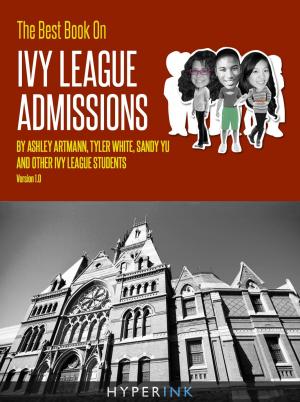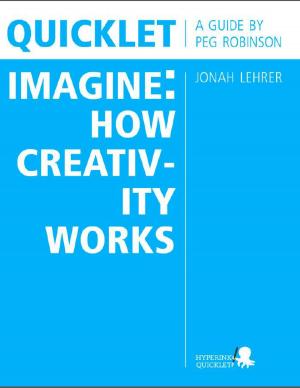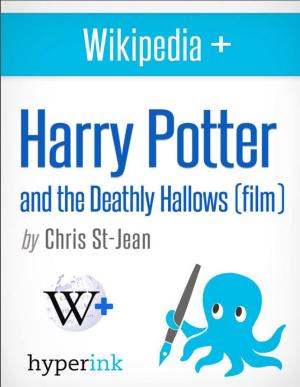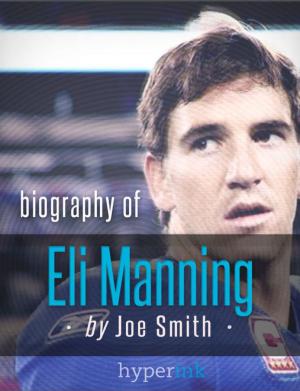Quicklet On Jules Verne's Around the World in Eighty Days
Nonfiction, Reference & Language, Study Aids, Book Notes, Art & Architecture, General Art| Author: | Miriam Kasdan | ISBN: | 9781484006917 |
| Publisher: | Hyperink | Publication: | February 8, 2012 |
| Imprint: | Hyperink | Language: | English |
| Author: | Miriam Kasdan |
| ISBN: | 9781484006917 |
| Publisher: | Hyperink |
| Publication: | February 8, 2012 |
| Imprint: | Hyperink |
| Language: | English |
ABOUT THE BOOK
Around the World in Eighty Days impressed me most of all because of its happy and satisfying ending. Despite all his adventures and missteps, the book’s hero, Phileas Fogg, managed to meet his deadline, that of circling the globe in 80 days, thus winning a bet made at his club.
Another attribute I liked is the change in Fogg’s character. The book begins with a description of his rigidity. His daily routine consists of a visit to the Reform Club, where he reads the papers and played whist. He is happily single and doesn’t seem to need a wife. He is seen at the club every day and has not left London in years. Not only is this trip the adventure of his life, it is also a chance for him to step out of his daily routine.
A stop in India changes his single status as well. He rescues a young widow from forced cremation, thus saving her life. The woman, Aouda, accompanies Fogg and his valet, Passepartout, on the remainder of their journey. Finally arriving back in London, it becomes clear that Fogg and Aouda have fallen in love, and they ended up getting married. Besides winning the bet, Fogg won the girl. It doesn’t get better than that.
MEET THE AUTHOR
Born in New York City, Miriam Kasdan has lived in the San Francisco Bay Area since age 10, and attended the University of California at Berkeley. She's always loved to read, and eventually discovered she could write as well. She enjoys reading the classics as well as contemporary novels by women authors.
EXCERPT FROM THE BOOK
Even though Verne’s novel, published in 1872, features a happy ending, all was not perfect in either France or Verne’s own life. Verne was conscripted into the coastguard during the Franco-Prussian War (1870-71). He was experiencing financial difficulties and his father had recently died.
Three technological breakthroughs occurred in 1869-70, which fascinated the author. The First Transcontinental Railroad was completed in the United States in 1869, with the last spike driven in Promontory, Utah. The bridging of the Central Pacific and Union Pacific Railroads meant that the previous four- to six-month journey for the overland pioneers was reduced to just six days. Also in 1869, the Suez Canal opened, thereby connecting the Mediterranean and Red Seas. And in 1870, railways in India were finally linked, making it possible to travel directly from Bombay (now called Mumbai) to Calcutta (also known as Kolkata).
Even though Verne is sometimes thought of as a writer of science fiction, there is no science fiction in Around the World in Eighty Days. Although he lived in France and wrote in French, Verne nonetheless writes about the British Empire during its peak, and pays homage to an empire “where the sun never sets.”
Buy a copy to keep reading!
ABOUT THE BOOK
Around the World in Eighty Days impressed me most of all because of its happy and satisfying ending. Despite all his adventures and missteps, the book’s hero, Phileas Fogg, managed to meet his deadline, that of circling the globe in 80 days, thus winning a bet made at his club.
Another attribute I liked is the change in Fogg’s character. The book begins with a description of his rigidity. His daily routine consists of a visit to the Reform Club, where he reads the papers and played whist. He is happily single and doesn’t seem to need a wife. He is seen at the club every day and has not left London in years. Not only is this trip the adventure of his life, it is also a chance for him to step out of his daily routine.
A stop in India changes his single status as well. He rescues a young widow from forced cremation, thus saving her life. The woman, Aouda, accompanies Fogg and his valet, Passepartout, on the remainder of their journey. Finally arriving back in London, it becomes clear that Fogg and Aouda have fallen in love, and they ended up getting married. Besides winning the bet, Fogg won the girl. It doesn’t get better than that.
MEET THE AUTHOR
Born in New York City, Miriam Kasdan has lived in the San Francisco Bay Area since age 10, and attended the University of California at Berkeley. She's always loved to read, and eventually discovered she could write as well. She enjoys reading the classics as well as contemporary novels by women authors.
EXCERPT FROM THE BOOK
Even though Verne’s novel, published in 1872, features a happy ending, all was not perfect in either France or Verne’s own life. Verne was conscripted into the coastguard during the Franco-Prussian War (1870-71). He was experiencing financial difficulties and his father had recently died.
Three technological breakthroughs occurred in 1869-70, which fascinated the author. The First Transcontinental Railroad was completed in the United States in 1869, with the last spike driven in Promontory, Utah. The bridging of the Central Pacific and Union Pacific Railroads meant that the previous four- to six-month journey for the overland pioneers was reduced to just six days. Also in 1869, the Suez Canal opened, thereby connecting the Mediterranean and Red Seas. And in 1870, railways in India were finally linked, making it possible to travel directly from Bombay (now called Mumbai) to Calcutta (also known as Kolkata).
Even though Verne is sometimes thought of as a writer of science fiction, there is no science fiction in Around the World in Eighty Days. Although he lived in France and wrote in French, Verne nonetheless writes about the British Empire during its peak, and pays homage to an empire “where the sun never sets.”
Buy a copy to keep reading!















